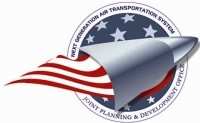IG Says FAA Having Difficulty Keeping The Project "On Track" In
Congressional Testimony
 The House Transportation and Infrastructure Subcommittee on
Aviation heard testimony on long-term planning and interagency
cooperation for the implementation of the Next Generation Air
Traffic Control system, also know as NextGen, on Wednesday. During
the hearing, a representative of the DOT said the FAA is "facing
challenges" in keeping the program on track.
The House Transportation and Infrastructure Subcommittee on
Aviation heard testimony on long-term planning and interagency
cooperation for the implementation of the Next Generation Air
Traffic Control system, also know as NextGen, on Wednesday. During
the hearing, a representative of the DOT said the FAA is "facing
challenges" in keeping the program on track.
The hearing was the Subcommittee’s fourth look at the
NextGen system in the 111th Congress.
Transportation committee chairman James Oberstar (D-MN) said
modernizing and transforming our ATC system is a national priority,
and Congress has made this clear by creating the Joint Planning and
Development Office (JPDO) within the Federal Aviation
Administration (FAA) to plan for, and coordinate with, Federal and
non-Federal stakeholders, to transform the current ATC system to
the NextGen system. "Because the JPDO is a multi-agency effort,
coordination between the JPDO and the Departments of
Transportation, Defense, Commerce, and Homeland Security, as well
as the National Aeronautics and Space Administration and the White
House Office of Science and Technology, is essential," he said.
But Oberstar cautioned that it is clear that such projects are
difficult to manage. "History has taught us that “big
bang” approaches to ATC modernization do not work," he said.
"As both the Department of Transportation Inspector General and the
Government Accountability Office (GAO) have noted, the FAA’s
major acquisitions in the past have run into billions of dollars of
cost growth and years of schedule delays, all of which are directly
traceable to overly ambitious plans, complex software development,
changing requirements, and poor contract management. I appreciate
that representatives of both the Inspector General and the GAO are
here today, and I look forward to hearing their testimony."
 In his prepared remarks for the committee, DOT IG Calvin L.
Scovel III said the FAA continues to face significant challenges in
achieving its NextGen long-term goals. "Central to this effort is
the successful implementation of ongoing modernization projects
that will provide platforms for new NextGen capabilities for
enhancing capacity," he said. "However, key multibillion-dollar
programs have experienced problems, and FAA has yet to fully
determine their NextGen-specific requirements. These platforms
include the $2.1 billion En Route Automation Modernization (ERAM)
program. Delays with this and other projects will have a cascading
effect on NextGen plans now and well into the future. One critical
step to avoid risks with NextGen’s cost, schedule, and
capabilities is addressing gaps in partner agencies’ research
and development efforts and long-term budgets and plans. We
identified actions that can be taken now to strengthen the
multi-agency approach, better leverage Federal research projects,
and prevent duplicative efforts."
In his prepared remarks for the committee, DOT IG Calvin L.
Scovel III said the FAA continues to face significant challenges in
achieving its NextGen long-term goals. "Central to this effort is
the successful implementation of ongoing modernization projects
that will provide platforms for new NextGen capabilities for
enhancing capacity," he said. "However, key multibillion-dollar
programs have experienced problems, and FAA has yet to fully
determine their NextGen-specific requirements. These platforms
include the $2.1 billion En Route Automation Modernization (ERAM)
program. Delays with this and other projects will have a cascading
effect on NextGen plans now and well into the future. One critical
step to avoid risks with NextGen’s cost, schedule, and
capabilities is addressing gaps in partner agencies’ research
and development efforts and long-term budgets and plans. We
identified actions that can be taken now to strengthen the
multi-agency approach, better leverage Federal research projects,
and prevent duplicative efforts."
"Delays or performance shortfalls in any of these systems will
impact NextGen’s development and implementation," Scovel
continued. "For example, FAA has not yet established firm
requirements that can be used to develop cost and schedule
estimates for modifications to existing terminal automation
systems, which will allow controllers to display and use satellite
surveillance to better manage traffic. According to FAA, it may
take an additional 1 to 2 years to develop requirements for these
systems and other mid-term NextGen efforts."
"While FAA is making progress in addressing NextGen’s
challenges, a number of critical actions are still needed, many of
which focus on aligning agencies’ research and resources to
reduce development costs and mitigate risks with a
multibillion-dollar effort that will span decades," said Scovel.
Unless these issues are effectively addressed in the near term, FAA
runs the risk that NextGen may not deliver the long-term benefits
needed to meet the expected future demand for air travel."
 Dr. Karlin Toner, Director of the JPDO, said the offices'
mission has evolved since it was created. "Initially, the office
was created by Vision-100 as an interagency group to work across
government and with the industry to define the NextGen integrated
plan," he said. "During the earlier planning stages, I was
fortunate to be part of that visionary group as a National
Aeronautics and Space Administration (NASA) researcher serving on
an integrated product team, helping to brainstorm ideas and
concepts that might benefit the modernization of our air
transportation system. As the planning matured, the JPDO focused
more exclusively on the long-term research planning."
Dr. Karlin Toner, Director of the JPDO, said the offices'
mission has evolved since it was created. "Initially, the office
was created by Vision-100 as an interagency group to work across
government and with the industry to define the NextGen integrated
plan," he said. "During the earlier planning stages, I was
fortunate to be part of that visionary group as a National
Aeronautics and Space Administration (NASA) researcher serving on
an integrated product team, helping to brainstorm ideas and
concepts that might benefit the modernization of our air
transportation system. As the planning matured, the JPDO focused
more exclusively on the long-term research planning."
Toner said the NextGen vision, expressed in the JPDO’s
Concept of Operations, contains a wide variety of possible ideas
that might be helpful to meet our Nation’s air traffic needs.
But, neither the vision nor avenues being considered are static.
NextGen capabilities are beginning to be implemented today, and as
we gain experience, our past work will help us refine how we more
effectively implement future NextGen goals. "Today’s world is
different than the one in which the NextGen Concept of Operations
was originally envisioned," he said. The economy, the airlines, the
environment, energy issues, and our security needs have changed
dramatically. To account for these changes, we must take a more
flexible approach to longer-term NextGen planning, blending
evolution and transformation to meet the national needs for air
transportation. We must test and prioritize our options against
these realities."
Toner said that by 2025, the expectation is that the air traffic
system will still rely on pilots and air traffic controllers, but
their roles will be different than they are today, and may be
different from what we currently predict them to be in 2025. "We
want to make sure that they will have the tools and systems they
need to perform their functions safely and effectively," he
said.
 Classic Aero-TV: The Switchblade Flying Car FLIES!
Classic Aero-TV: The Switchblade Flying Car FLIES! ANN FAQ: Q&A 101
ANN FAQ: Q&A 101 ANN's Daily Aero-Term (04.12.24): Discrete Code
ANN's Daily Aero-Term (04.12.24): Discrete Code ANN's Daily Aero-Term (04.13.24): Beyond Visual Line Of Sight (BVLOS)
ANN's Daily Aero-Term (04.13.24): Beyond Visual Line Of Sight (BVLOS) ANN's Daily Aero-Linx (04.13.24)
ANN's Daily Aero-Linx (04.13.24)





